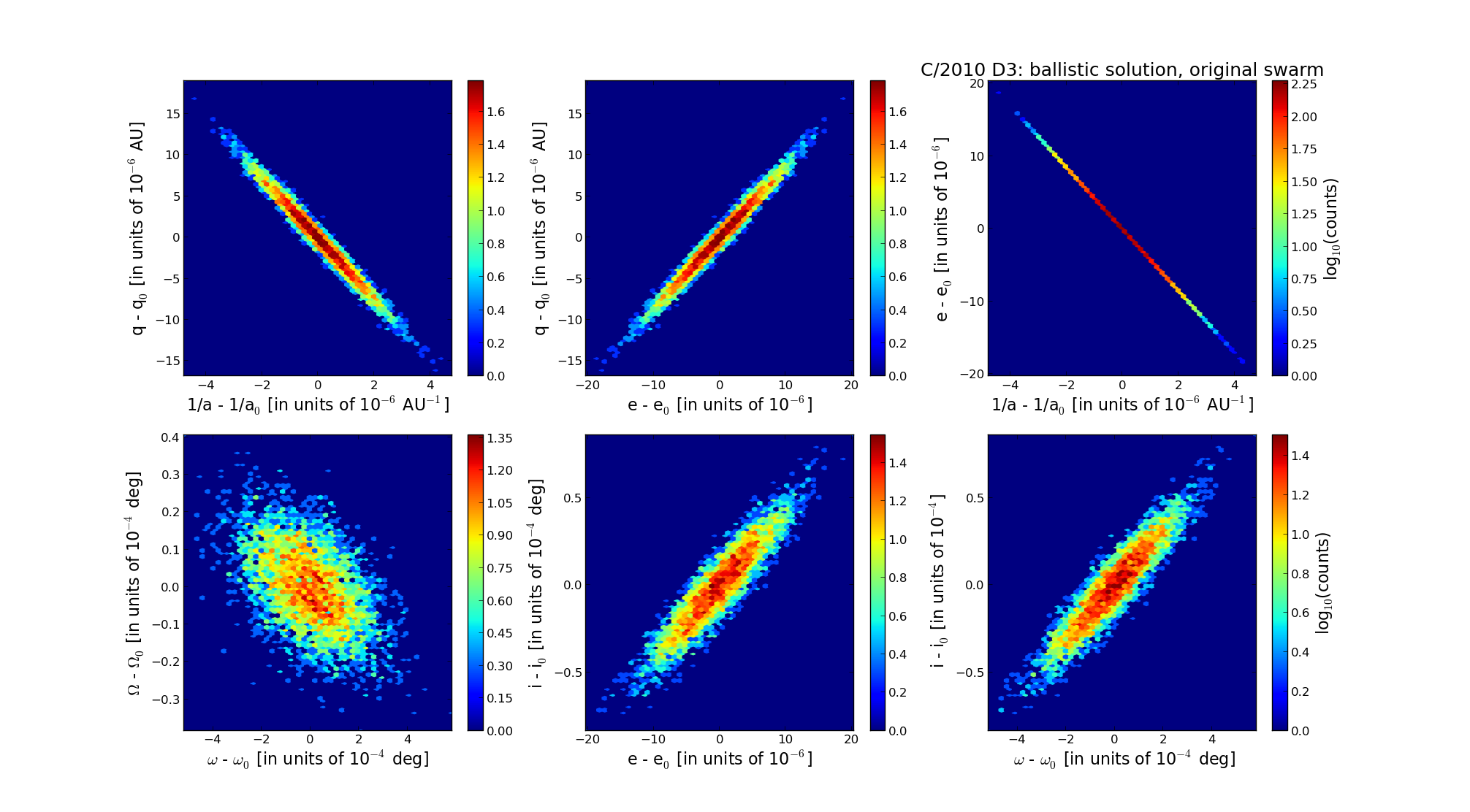| Solar System Dynamics & Planetology Group |
 |
C/2010 D3 WISE |  |
| Solar System Dynamics & Planetology Group |
 |
C/2010 D3 WISE |  |
| number of observations | 97 |
| number of residuals | 187 |
| data interval | 2010 Feb. 24 — 2013 June 11 |
| rms [arcsec] | 0.52 |
| orbit quality class | 1a |
| Epoch (TT) | 20100901.0 | = JD 2455440.5 |
| time of perihelion passage (TT) | 20100903.915130 | ± 0.001010 |
| perihelion distance | 4.24752343 | ± 0.00000425 |
| eccentricity | 0.99956603 | ± 0.00000490 |
| argument of perihelion [deg] | 304.641320 | ± 0.000134 |
| longitude of the ascending node [deg] | 255.238093 | ± 0.000010 |
| inclination [deg] | 76.391671 | ± 0.000022 |
| inverse semimajor axis [10-6 au-1] | 102.17 | ± 1.15 |

| Epoch (TT) | 17060826 | |
| time of perihelion passage (TT) | 20100904.080190 | ± 0.001039 |
| perihelion distance | 4.24846025 | ± 0.00000438 |
| eccentricity | 0.99991442 | ± 0.00000502 |
| argument of perihelion [deg] | 304.623984 | ± 0.000137 |
| longitude of the ascending node [deg] | 255.242399 | ± 0.000010 |
| inclination [deg] | 76.358086 | ± 0.000022 |
| inverse semimajor axis [10-6 au-1] | 20.14 | ± 1.18 |
| Epoch (TT) | 23161007 | |
| time of perihelion passage (TT) | 20100904.425117 | ± 0.001013 |
| perihelion distance | 4.24461582 | ± 0.00000435 |
| eccentricity | 0.99919099 | ± 0.00000502 |
| argument of perihelion [deg] | 304.568634 | ± 0.000138 |
| longitude of the ascending node [deg] | 255.203753 | ± 0.000010 |
| inclination [deg] | 76.374021 | ± 0.000023 |
| inverse semimajor axis [10-6 au-1] | 190.60 | ± 1.18 |